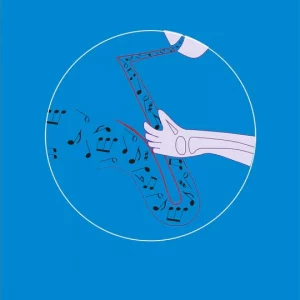Chapter 3 – Heart: melodic creation
14,99 € TTC
Chapter available only in digital version (PDF).
View the summary of the complete method: in French or in English.
Find all the audios of the SOS IMPRO method on our YouTube channel.
How to gradually create a melody?
Chapter 3 (the “heart”) is, together with the 4th, at the center of this method. It demonstrates how to gradually create a melody with a single type of value: whole note, half note, quarter note then eighth note, over a full cadence, using one of the following 3 melodic cells :
- “Tetrad” cell (4-note chords: triad + 7th or doubled note of the triad)
- “Conjunct motion + 1 skip” cell
- “Intervallic melodic” cell
These 3 types of melodic cells are kinds of melodic bricks (Lego) you can assemble together to create your own melody.
Plan
- the exercises are done (3.1) at beginner level (whole, half and quarter notes): by taking a pivot point (voice leading) on the 1st beat, in major and minor modes, in 4/4 and in 3/4
- then at intermediate level (3.2), in eighth notes, taking a pivot point (voice leading) on the 1st and 3rd beats.
- The Chapter concludes with a presentation of the chromatic approach technique (3.3) widely used in jazz, as well as a pianists’ corner (3.4): example of left hand accompaniment on a full cadence in half and quarter notes then syncopation in 3/4 and 4/4.
Share this product…
Facebook
Twitter
Pinterest
You may also like...
-

Chapter 5.3 – Guide to analysing 15 famous Jazz standards
9,99 € TTC Select options This product has multiple variants. The options may be chosen on the product page -

Chapter 5.1 – Summary « Take The A Train»
9,99 € TTC Select options This product has multiple variants. The options may be chosen on the product page -

Chapter 5.2 – Summary “Summertime” (minor key)
9,99 € TTC Select options This product has multiple variants. The options may be chosen on the product page -

Complete musical improvisation method
40,00 € – 45,00 €Price range: 40,00 € through 45,00 € TTC Select options This product has multiple variants. The options may be chosen on the product page
